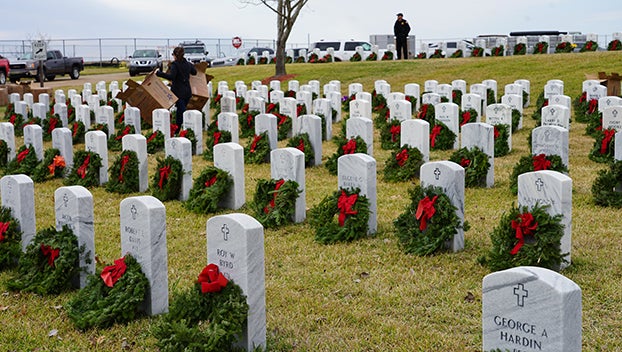Governor finalizing plans for statewide shelter-in-place order after grim plea from a top doctor
Published 2:43 pm Wednesday, April 1, 2020
|
Getting your Trinity Audio player ready...
|
By
Gov. Tate Reeves, who for weeks resisted calls to issue a statewide order requiring residents to stay at home, is finalizing plans to issue such an order — a decision that comes amid mounting pressure from the state’s top medical leaders and lawmakers.
Sources familiar with Reeves’ plans told Mississippi Today that Reeves could announce the statewide stay-at-home order as early as Wednesday afternoon. The governor’s decision, sources said, was based in part on models showing Mississippi’s cases peaking near the end of April and early May.
For weeks, Reeves has maintained that the spread of cases in Mississippi did not yet warrant such action, also citing the potential effect of a shutdown on the state’s economy. As of Wednesday morning, governors in at least 33 states had issued some form of statewide shelter-in-place order.
But between Tuesday evening and Wednesday morning, the walls closed in on Reeves as he faced increased pressure from state medical professionals and elected officials as the number of confirmed COVID-19 cases continued climbing.
Dr. LouAnn Woodward, the vice chancellor of the University of Mississippi Medical Center, sent Reeves a grim plea for a “shelter in place” order in an email on Wednesday morning. She pointed out that if models of the virus’ spread in Mississippi are accurate, the need for intensive-care unit beds and ventilators “will surpass our resources.”
“The reality is we are facing an uphill battle as a state. As the CEO of the organization that will bear the brunt of the fallout, I need to speak my mind,” Woodward wrote in the email, parts of which Mississippi Today obtained and confirmed with sources. “Without a statewide ‘shelter in place’ starting very soon (which is proving effective elsewhere), our health system will be overwhelmed. The immediate time frame (right now) is our last inflection point in controlling COVID-19 spread in our state.”
Woodward continued: “In my opinion, (a shelter-in-place order) is the only additional thing we can do right now to decrease the force of the impact. Any and every ventilator and ICU bed we can spare will matter. I couldn’t let another day pass without sharing my perspective. We are worried.”
Earlier this week, six Republican state senators from the Gulf Coast wrote Reeves a letter asking him to place guidelines on coastal counties that would match shelter-in-place orders. In the letter, sent on Tuesday, the senators requested that Reeves issue a statewide order that would close beaches and increase law-enforcement patrols of restaurants, bars, stores and other businesses to ensure compliance with the restrictions.
“We are writing to express our concerns and to request specific and immediate actions be taken in response to the treatment and spread of the novel coronavirus COVID-19 as it pertains to the Gulf Coast,” the senators wrote in their Tuesday letter to Reeves. “We respectfully request these actions be handed down immediately from your office.”
Newly released modeling being used by federal and state health officials to determine coronavirus spread estimates daily deaths in Mississippi will peak at 40 per day toward the end of April. In her email to Reeves on Wednesday morning, Woodward said that current modeling, which changes frequently, suggests the state’s peak number of cases would occur sometime in the last two weeks of April and the first two weeks of May.
On the morning of April 1, state officials announced 136 new cases and two new deaths, pushing the total number above the 1,000 mark and the number of deaths across the state at 22.
So far, the state has averaged three COVID-19 deaths per day since March 25, with the most reported in one day the last weekend of March, at five. The newly released model from the Institute for Health Metrics and Evaluation assumes social distancing regulations are in place and being followed, which professionals have noted might not occur without strict shelter-in-place orders.







